Growing grapes in a greenhouse
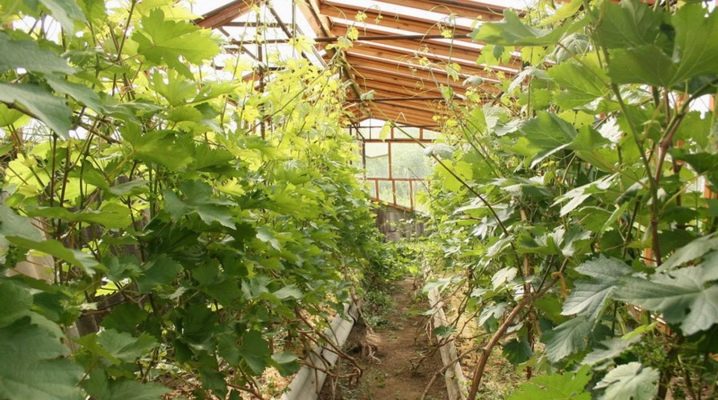
The climatic conditions of different regions do not always allow the cultivation of thermophilic crops, especially such as grapes. This is affected by low average daily temperatures in the warm season, as well as insufficient daylight hours. In this case, it is recommended to use modern techniques to grow the southern plant in greenhouses. Thanks to the many years of practice of experienced breeders, greenhouse varieties are absolutely not inferior to traditional ones in quality characteristics.

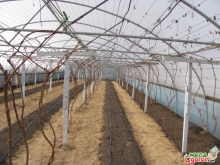
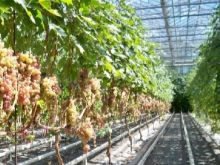
What varieties are right?
Perfect technology allows you to grow grapes on any personal plot using a greenhouse for this purpose... With patience and applying some knowledge, you can achieve a high result in obtaining a bountiful harvest from the selected crop. Closed structures will allow not only to increase the length of the season, hiding plants from spring frosts, but also to protect them from such unpleasant influences as precipitation in the form of hail.

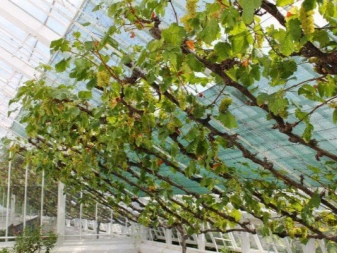
Before planting grapes in the greenhouse, you should select the variety that best suits the wishes of the customer. Most often, such attempts are made in zones with a temperate climate, where the following varieties have proven themselves well:
- Michurinsky;
- Early North;
- "Bulgaria";
- "Russian Korinka";
- Moscow Sustainable.
Polycarbonate greenhouses will be an excellent solution for planting the presented varieties already at the beginning of spring. Each of the new varieties grows and develops excellently in an enclosed space with proper care at the required temperature and sufficient illumination.
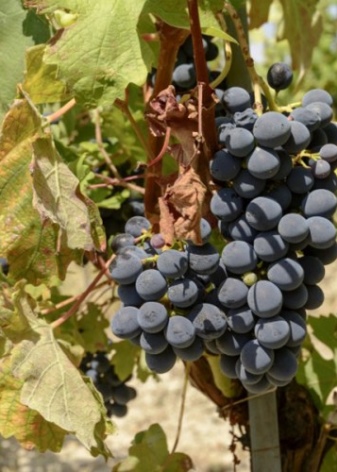
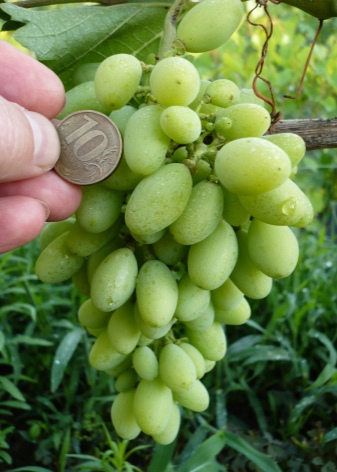
Landing
For planting the vine, first of all, prepare the soil. It is best to use a compost mixture prepared according to a specific recipe.
- A little superphosphate and wood ash enriched with potassium are added to a portion of humus.
- The resulting substance is diluted 50/50 with soil from a greenhouse.
- Planting holes are dug to a depth of 0.5 m, filled with compost mixture, and seedlings are planted.
- When planting, it is important to carefully spread the root system, place the seedling in a moistened hole, press it down with soil, and water it abundantly.
Planting cuttings in the greenhouse can be done already in early March. During this period, daylight hours lasts sufficient time for plants, and the external average daily air temperature does not reach dangerous values. In the greenhouse equipment, it is important to include support frames for the developing vine to cling to.
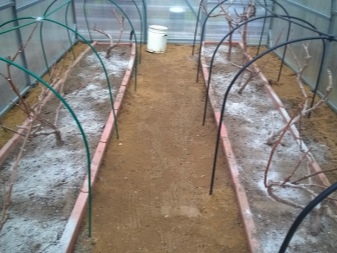
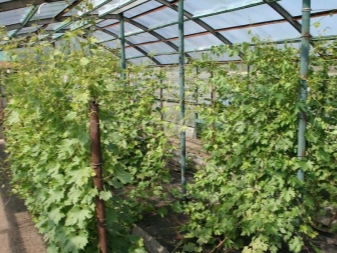
It should be remembered that grapes must be kept hanging to avoid premature decay.
Care
In order to obtain a good harvest in greenhouse conditions, plants must be properly cared for. The most important condition that allows the plant to move to the next phase of development in a timely manner, without reducing the growth rate, is the temperature regime.
This means that the air temperature in the greenhouse must meet certain standards at each stage of plant development. There is a framework for each cycle, which includes:
- period of kidney development;
- time of active growth of the vine;
- flowering period;
- the stage of fruit formation;
- ripening period.
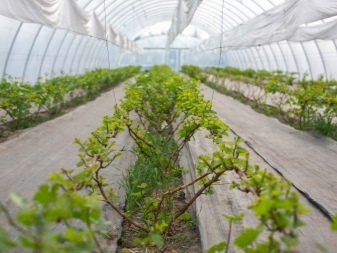
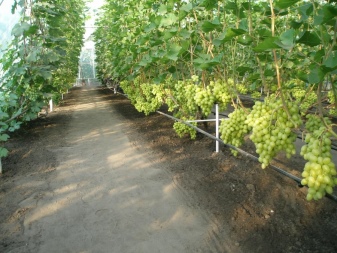
Each intermediate stage has its own optimal temperature range, allowing the plant to feel comfortable. Too high or too low temperatures will equally badly affect the growth of the crop. This can result in late harvesting at additional costs. This means that it is important not only to insulate the greenhouse, but also to equip it with darkening in the form of a special mesh. This precaution will prevent the sun's rays from overheating the interior.
In addition, an effective ventilation system must be provided to ventilate the greenhouse at high daytime temperatures. For this purpose, opening sashes are used, allowing the space to be filled with fresh air in a natural way. This procedure will allow not only supplying plants with the required amount of oxygen, but also observing the required temperature regime.
One of the important stages of caring for grapes is pinching.... The procedure is reduced to the timely removal of underdeveloped shoots, diseased leaves and non-pollinated inflorescences. Thus, the root system will not waste valuable energy resources on the maintenance of useless elements. On the other hand, all the forces of the plant will be directed to the development of healthy shoots and full-fledged fruits.
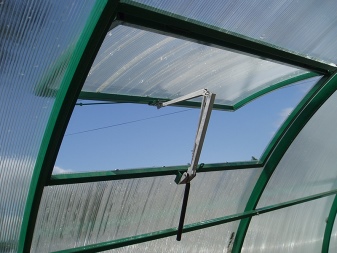
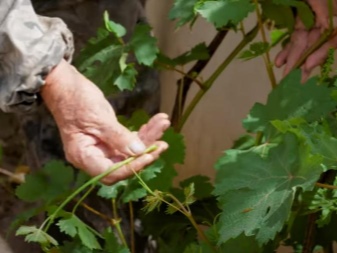
The flowering period of grapes, as a rule, begins in the second half of May.... Most greenhouse varieties are prone to self-pollination, but some crops still need outside help. This point must be clarified at the time of purchase. To pollinate the grape color is quite simple: you need to methodically shake the branches with inflorescences.
An actively developing vine can fight off an artificial support, in this case it must be fixed forcibly. Barren shoots are to be pruned, they are shortened to the position of the fifth leaf. If these are stepchildren of the second order, they can be shortened to the location of the first sheet. With abundant fruiting, green bunches of grapes should also be thinned out. Internal formations that are poorly adapted to full-fledged development due to poor location are subject to removal.
TOWhen the crop is harvested and the leaf has flown around, it's time for autumn pruning. During this period, all long processes are removed to the location of the first kidney. In this case, the central stems are shortened by 2/3 of the length. The vine is detached from the support, spread over the soil and covered with hay, straw or sawdust so that in winter it does not die from frost.
If the roof in the greenhouse has a removable structure, it is removed for the winter. The covered grapes winters excellently under the snow.
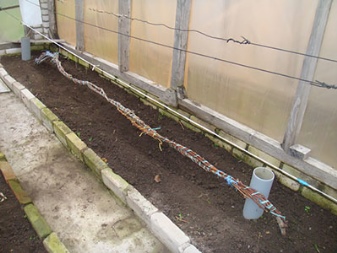














The comment was sent successfully.